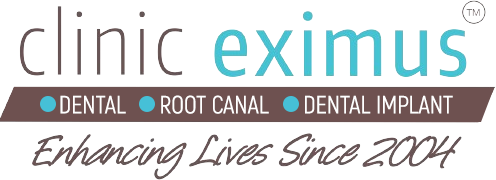If you’re experiencing tooth pain or sensitivity, you may have been advised to undergo root canal treatment. Though this procedure is often misunderstood, it’s an essential treatment that can save a damaged or infected tooth and relieve discomfort. If you’re considering root canal treatment in Delhi, understanding the steps involved, aftercare, and potential side effects will help alleviate any concerns. In this blog, we’ll guide you through the process of a root canal treatment, the aftercare, and what to expect during recovery.
What is Root Canal Treatment?
A root canal treatment is a dental procedure used to treat infection or damage to the pulp, the soft tissue inside the tooth. If left untreated, infection in the tooth pulp can lead to pain, swelling, and even tooth loss. The purpose of this procedure is to remove the infected pulp, clean the canals, and seal the tooth, preserving it for future use.
For those searching for root canal treatment in Delhi, rest assured that you have access to world-class care. Many patients visit Delhi for this procedure, as the cost is competitive, and you can find some of the best root canal specialists in Delhi who are skilled in the latest techniques and technologies.
Procedures Of Root Canal Treatment
Here’s a breakdown of the typical steps involved in a root canal treatment:
Diagnosis and Consultation: The first step in any root canal treatment in Delhi is a thorough consultation with your dentist. At Clinic Eximus, our specialists will conduct an examination and take X-rays to evaluate the extent of damage or infection in the tooth. The dentist will use this information to determine if a root canal is necessary.
Local Anesthesia: To ensure the procedure is as comfortable as possible, a local anesthetic will be applied to the affected area to numb the tooth and surrounding tissues. This ensures that you won’t feel pain during the treatment.
Tooth Isolation: To keep the area dry and free from saliva, the dentist will place a rubber dam around the tooth. This allows the dentist to focus on the tooth without interference.
Accessing the Pulp: Next, the dentist will create a small opening in the tooth to access the pulp chamber. This is where the infection or damage is located. The dentist will carefully remove the infected pulp, bacteria, and any decayed material inside the tooth.
Cleaning and Shaping the Root Canals: After removing the pulp, the dentist will clean and shape the root canals to remove any remaining bacteria. This step is crucial in ensuring that the tooth remains free from infection after the procedure.
Filling the Root Canals: Once the root canals are thoroughly cleaned and shaped, they are filled with a biocompatible material called gutta-percha. This seals the canals to prevent any future infection.
Sealing the Tooth: Finally, the dentist will seal the access hole with a temporary filling. In many cases, a permanent crown or filling will be placed during a follow-up visit to restore the tooth’s full function and appearance.
Side Effects Of Root Canal Treatment
Once the root canal treatment is complete, it’s essential to follow proper aftercare instructions to ensure optimal healing. Here’s what you can expect:
- Pain Management: It’s normal to experience some discomfort or mild pain after the procedure. Over-the-counter pain medications, like ibuprofen, can help alleviate any soreness. This discomfort should subside within a few days.
- Avoid Chewing on the Treated Tooth: Until the permanent restoration (such as a crown) is placed, avoid chewing on the treated tooth to prevent any damage or pressure on the area.
- Maintain Good Oral Hygiene: Continue brushing and flossing your teeth as usual, but be gentle around the treated area to avoid irritation. Keeping your mouth clean is key to preventing infection.
- Follow-Up Appointments: A follow-up visit may be necessary to ensure the tooth is healing properly and to place a permanent filling or crown. The dentist will monitor the area for any signs of complications.
- Restoring the Tooth: A crown or filling is often placed after the root canal to restore the tooth’s strength. This is especially important for teeth that undergo heavy chewing pressure.
Recovery and What to Expect
The recovery process after a root canal treatment in Delhi is typically quick, with most patients returning to their regular activities within a day or two. However, it’s important to follow proper aftercare to ensure healing and avoid complications:
- First Few Days: Mild swelling and discomfort are common in the first few days following the procedure. A cold compress can help reduce swelling.
- Avoid Certain Foods: Stick to soft foods and avoid chewing on the treated tooth until a permanent restoration is placed. This will help protect the tooth from any damage.
- Return to Normal Activities: Most patients can resume normal activities immediately, but if you experience excessive pain or swelling, contact your dentist for guidance.
- Full Recovery: Once the final restoration (such as a crown) is placed, the treated tooth should function like any other tooth, allowing you to eat, chew, and speak normally without pain.
Why Choose Clinic Eximus for Your Root Canal Treatment?
At Clinic Eximus, we pride ourselves on offering high-quality root canal treatment in Delhi. Our team of highly skilled professionals is committed to providing expert care and ensuring that your treatment is comfortable and effective. Whether you’re in need of a root canal or simply have questions, we’re here to guide you through the process with the utmost care and attention to detail.
Conclusion
A root canal treatment can save a tooth from extraction and relieve the pain caused by infection. If you’re considering root canal treatment in Delhi, Clinic Eximus offers top-notch care with the best root canal specialists in Delhi. By understanding the steps, aftercare, and potential side effects, you can approach the procedure with confidence. Contact Clinic Eximus today to schedule a consultation and take the first step toward a healthier smile.


